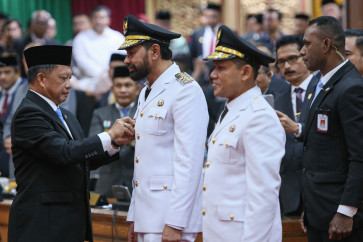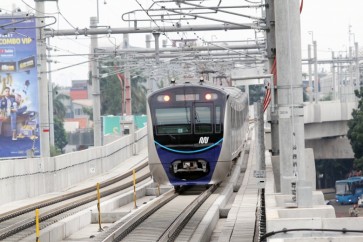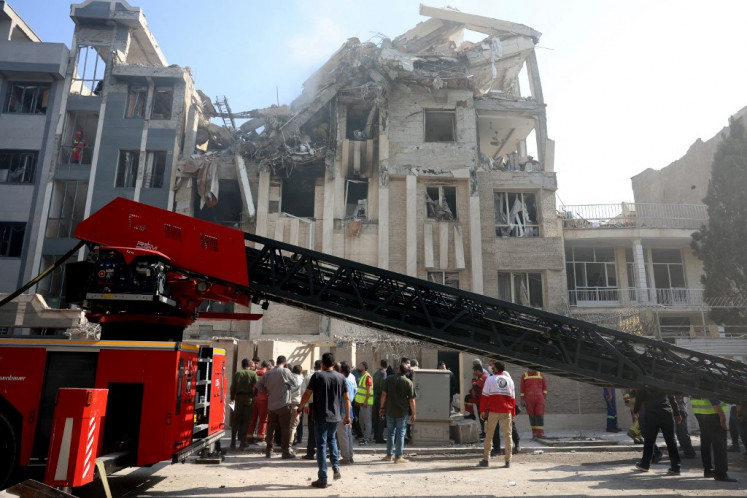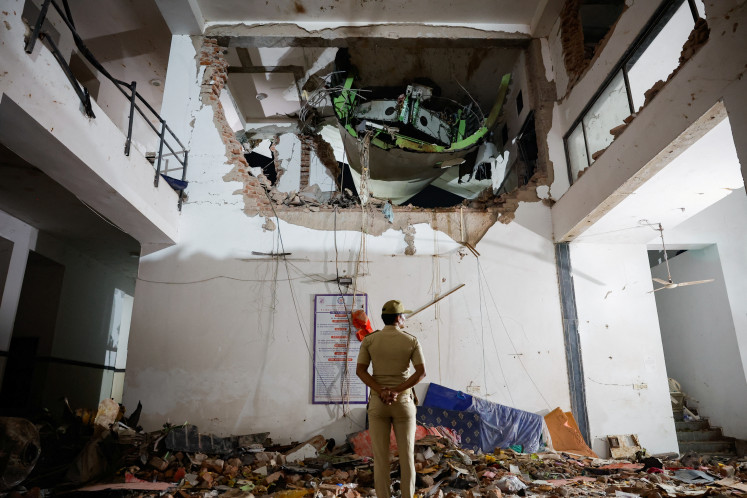Bengkayang 'bidai' on Malaysian market
Bidai, or rattan mats, are an exclusive cottage industry product created in the border area between West Kalimantan and Sarawak, Malaysia
Change text size
Gift Premium Articles
to Anyone

B
idai, or rattan mats, are an exclusive cottage industry product created in the border area between West Kalimantan and Sarawak, Malaysia. In Bengkayang regency, West Kalimantan, bidai are known as traditional products that have been handed down through the generations.
The mats, which are woven using the main raw material of rattan, combined with a type of wood locally known as kayu kepuak, have penetrated the market in Sarawak through informal trade routes. Commonly, traders buy the mats from craftspeople in villages and then sell them in Sarawak.
When sold in Sarawak, bidai are repackaged and marketed as though they were made in Malaysia. Two districts in Bengkayang regency, namely Seluas and Jagoi Babang, are located relatively close to Serikin in Sarawak, where trade activities have taken place for a long time and have become a daily occurrence.
Bengkayang's Industry, Trade and Small- and Medium-Scale Enterprises Office head, Luter W., said on March 16 that craftspeople still producing bidai in the traditional manner were hampered by difficulties in obtaining raw materials, because rattan and kepuak have to be brought in from Central Kalimantan as supplies have been depleted in Bengkayang.
The provincial administration has offered assistance by providing 150 hectares of land to cultivate rattan, but this is not enough to meet the demand for raw materials from the craftspeople.
'The 150 hectare area for rattan cultivation can only produce 200 whole rattan poles. This is inadequate for the needs of the craftspeople,' said Luter.
Based on data gathered by the provincial administration, the total number of bidai craftspeople is just 10. The real number is estimated to be higher but statistics have yet to be formally obtained. The price of a piece of bidai from local craftspeople is over Rp 800,000 (US$70).
'The 10 craftspeople are able to produce around 200 pieces of bidai monthly. A piece of bidai measuring four by six meters takes three days to finish,' said Luter.
Bengkayang Development Planning Board (Bappeda) head Obaja said the bidai industry could become part of special interest tour packages in the future.
Visitors could be given the opportunity to watch bidai being made, from the preparation of raw materials to the traditional production process, Obaja explained.
According to Obaja, such tours could become an environmentally-friendly form of tourism, especially with the inclusion of a cultivation area, which would allow visitors to follow the entire process completely, from harvesting rattan to seeing the finished bidai products.
'However, to achieve the concept of the tour package, we are still faced with a huge challenge, because currently people take raw materials from the forest but are unwilling to replant them,' said Obaja.
The deputy head of cooperatives, financial and economic affairs at the Industry, Trade and Small- and Medium-Scale Enterprises Office, Felix Tumangger, said bidai were currently known as a souvenir in other countries, despite the fact that they originated from craftspeople in the villages of Bengkayang.
'Bidai are not merely mats or ornaments, but an artistic woven product, handed down from one generation to another and often used as a utensil, such as a mat for drying rice,' said Felix.
According to him, initiatives to form cooperatives or even regional enterprises for craftspeople must be implemented to support and accommodate local handicrafts. Such enterprises would also aim to break the chain of transactions between craftspeople and middlemen, resulting in added value for the craftspeople.
Felix viewed the need for a venture that could supply raw materials ' by procuring rattan farms and kepuak wood ' as a way to stop depending on other provinces for supplies. Previously, added Felix, local artisans had sourced their raw materials from the forests surrounding Bengkayang.
'But over time they have run out of resources because they have not been managed in a sustainable manner. The challenge for the future is to consider how to develop an area for raw materials that is sustainable, to accommodate the needs of craftspeople,' said Felix.









